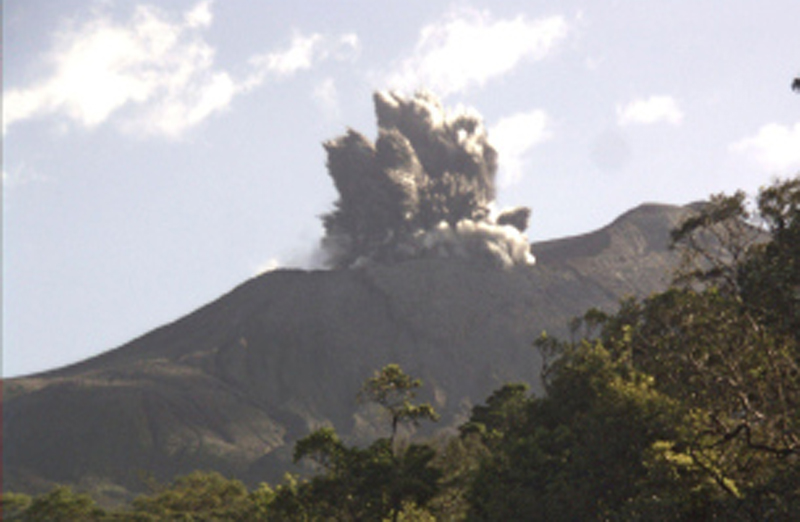Report on Rincon de la Vieja (Costa Rica) — September 2018
Bulletin of the Global Volcanism Network, vol. 43, no. 9 (September 2018)
Managing Editor: Edward Venzke.
Research and preparation by Paul Berger.
Rincon de la Vieja (Costa Rica) Intermittent weak phreatic explosions during January-March and July-August 2018
Please cite this report as:
Global Volcanism Program, 2018. Report on Rincon de la Vieja (Costa Rica) (Venzke, E., ed.). Bulletin of the Global Volcanism Network, 43:9. Smithsonian Institution. https://doi.org/10.5479/si.GVP.BGVN201809-345020
Rincon de la Vieja
Costa Rica
10.83°N, 85.324°W; summit elev. 1916 m
All times are local (unless otherwise noted)
The Rincón de la Vieja volcano complex has generated intermittent phreatic explosions since 2011; during 2017, weak phreatic explosions occurred during May, June, July, September, and October (BGVN 42:08 and 43:03). This activity continued through August 2018. The volcano is monitored by the Observatorio Vulcanologico Sismologica de Costa Rica-Universidad Nacional (OVSICORI-UNA).
According to OVSICORI-UNA, at 1758 on 9 January 2018, an explosion produced a plume that rose 1 km above the crater rim. On 12 January, OVSICORI-UNA reported some small phreatic explosions. The webcam detected weak explosions again in mid-February. Another weak explosion on 22 February confirmed the presence of a crater lake.
During the first week of March OVSICORI-UNA reported weak phreatic explosions of low amplitude that were only be detected by the webcam (figure 28), and not by seismic instruments. During the week of 5-11 March there were 2-4 weak phreatic explosions occurred per day, along with strong tremor on the 10th. Small eruptions were seen on unspecified days the week of 12-18 March.
 |
Figure 28. Webcam image of a phreatic explosion at Rincon de la Vieja on 3 March 2018. Courtesy of OVSICORI-UNA. |
No phreatic activity was reported during the second half of March through June, though on 20 May a seismic swarm of about 30 earthquakes was recorded. After a tremor on 3 July, a possible weak phreatic explosion occurred on 4 July at 0044, followed by a pulse of tremor. On 28 July, at 1828, a small explosion followed by tremor was recorded.
On 3 August OVSICORI-UNA reported that two weak explosions occurred at dawn. On 14 August, another weak explosion began at 1828 and lasted three minutes. Foggy conditions prevented webcam views and an estimate of a plume height. Other weak explosions were recorded on 17 August at 1407 and 2015.
Geological Summary. Rincón de la Vieja, the largest volcano in NW Costa Rica, is a remote volcanic complex in the Guanacaste Range. The volcano consists of an elongated, arcuate NW-SE-trending ridge constructed within the 15-km-wide early Pleistocene Guachipelín caldera, whose rim is exposed on the south side. Sometimes known as the "Colossus of Guanacaste," it has an estimated volume of 130 km3 and contains at least nine major eruptive centers. Activity has migrated to the SE, where the youngest-looking craters are located. The twin cone of Santa María volcano, the highest peak of the complex, is located at the eastern end of a smaller, 5-km-wide caldera and has a 500-m-wide crater. A Plinian eruption producing the 0.25 km3 Río Blanca tephra about 3,500 years ago was the last major magmatic eruption. All subsequent eruptions, including numerous historical eruptions possibly dating back to the 16th century, have been from the prominent active crater containing a 500-m-wide acid lake located ENE of Von Seebach crater.
Information Contacts: Observatorio Vulcanologico Sismologica de Costa Rica-Universidad Nacional (OVSICORI-UNA), Apartado 86-3000, Heredia, Costa Rica (URL: http://www.ovsicori.una.ac.cr/).

